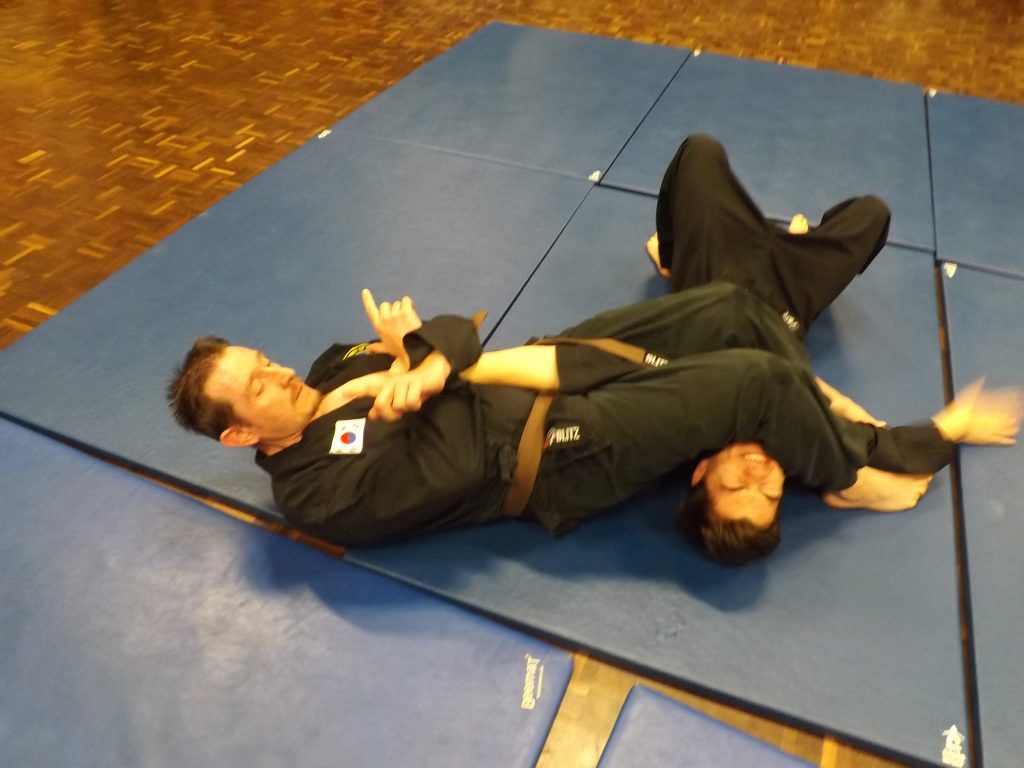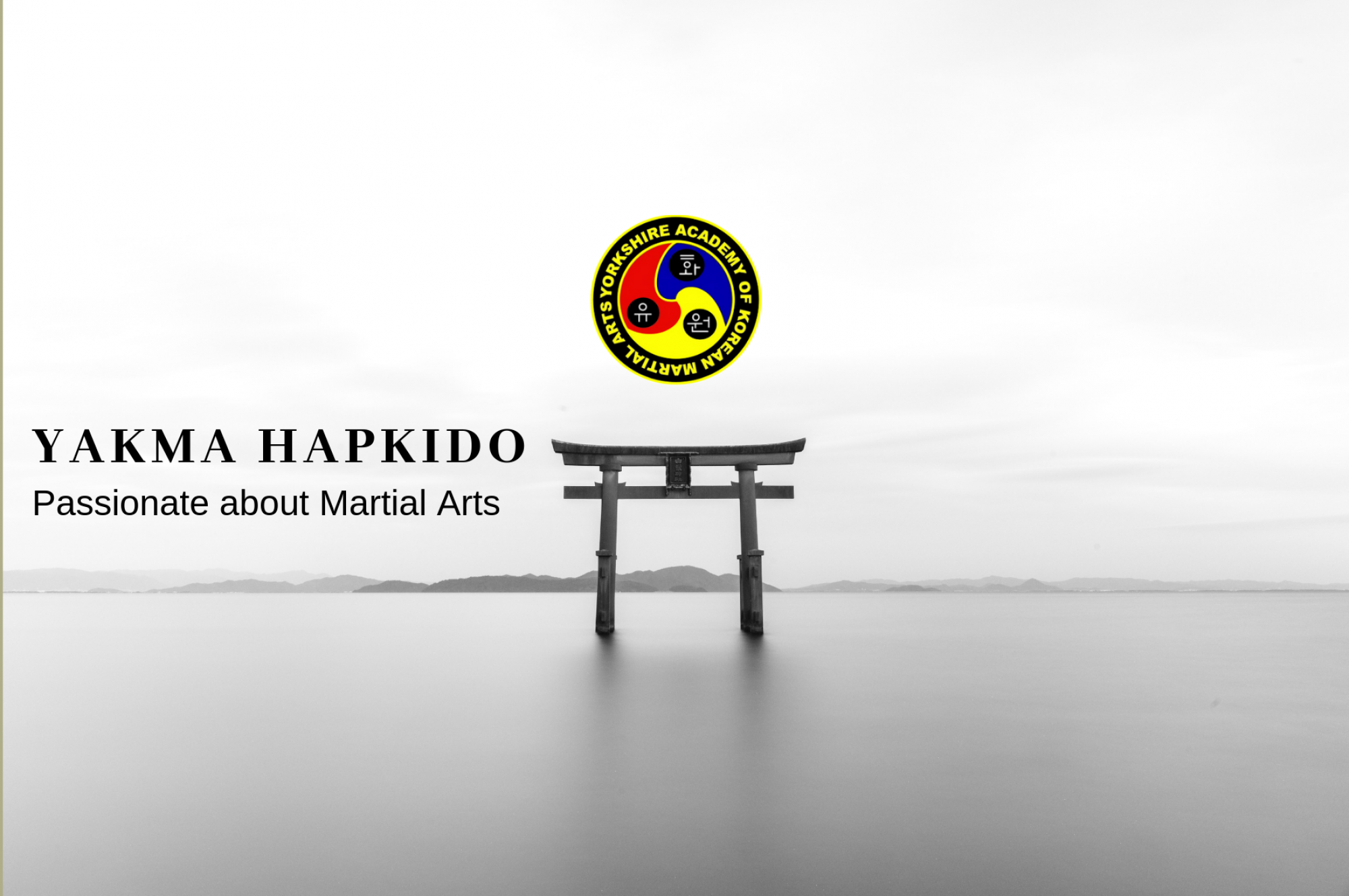
Protect Your Training Partner
A good training partner can be the difference between a totally enjoyable fruitful lesson and a frustrating possibly painful waste of your training time.
I’m sure a lot of us have had the experience of training with a partner who has something to prove. If you are practicing a block for the first time they punch with full speed and force. When sparring the instructor specifies light contact and again they come steaming in as hard and fast as they can. They can’t make the technique you’re practicing work so they drop you by using a totally different technique without warning you.
If there is an agreed level of contact then everyone should work at that level. If you’re not good enough to compete on even terms then more practice should be your solution not cheap shots.
Another type of difficult partner is the one who has just started Hapkido and insists on giving everyone their opinion on the practicalities of what we do. They often seem preoccupied with proving the techniques don’t work.
Very often you’ll hear the famous “This wouldn’t work in the street”. Next they’ll start to be awkward while you’re trying to practice the technique.
Not long ago I taught a student a technique that requires your opponent’s arm to be bent. Unfortunately for him he was partnered with someone taking his first lesson but already thought he knew it all.
I watched the student try the move and he was performing it well so I moved on to another member of the class.
After a few minutes I noticed the student was struggling with the technique as the new student was locking his arm straight. The student looked at me as if to say “What am I supposed to do?” I walked over and told the new member that I was going to perform the move on him and to resist as hard as he could. As soon as I started he locked his arm straight so instead of going for the bent arm move I applied a straight arm bar to take him down. To be fair on him once he realised that there was more to it than he initially thought he did settle down and worked well.
If you try to apply a bent arm move and your partner straightens their arm don’t try to use force the bent arm move, apply a straight arm technique instead.
This is one of the fundamental principles of Hapkido. The Hap means to harmonise or blend with. Therefore if someone is pulling you go with it, don’t hold back resisting their force, move in and go with it. By applying your own force in the same direction your opponent is exerting theirs you add to it and turn it to your advantage.
In the words of Morihei Ueshiba “If he wants to pull back send him on his way.”
There are two distinct stages in learning a new technique. Number one learn it in isolation. Number two use it in sparring or practice it as part of a combination series.
Although switching from one technique to another that fits the situation better should become automatic after years of training we have to learn the individual techniques to do this first. If you want to learn a bent arm technique you need a partner who is willing to bend their arm. If you are trying to learn a straight arm bar you need a cooperative partner.
If you know in advance what technique is coming, what side it is being applied to and when it is being delivered it doesn’t take a genius to stop it.
I remember a seminar when two “spoilers” were training together. By the end of the first day their wrists were bleeding from being gripped so hard. On the morning of the second day I asked the wife of one of the partners how he was. She replied, “Yesterday he jumped out of bed raring to go but today I could tell he didn’t want to come”.
It’s obvious from the above that no one wants to train with an awkward uncooperative partner however it is possible to be too cooperative. I have seen many children fall before a technique is applied or tap before pressure is applied. When practicing blocks the person throwing the punch will throw it to the side of their partner so if the block fails it will not hit them anyway. This is done out of consideration for their partner. After a while the person gets into the habit of blocking a punch that is going to the side meaning they aren’t covering their centre. The problem comes when they practice the block with a partner who is punching realistically. The punch goes straight through their block. As well as being cooperative we need to be realistic if we are to effectively progress.
When training with a partner it is best to agree on levels of resistance and speed of application. When practicing a block for the first time you don’t want a partner throwing a full speed punch. When practicing a joint lock for the first time you don’t want someone to apply a vice like grip. Most people don’t need these things pointing out but if you are partnered with someone who is determined to prove something it’s a good idea to quietly explain what is expected of them before things deteriorate.
You can often spot the difficult training partner, in an odd numbered class they’re the one stood on their own after the class has partnered up.
In modern martial arts there are an ever increasing amount of training aids. The most important one though is still your training partner, take care of them, if you break them who will you train with?
Your training partner trusts you enough to allow you to experiment on their body. Respect this and use reasonable force at all times, stop as soon as your partner taps.
Virtually all the problems I have listed above are due to large egos. We are all at different stages in our training and the day you realise that you are here to learn and do not have to prove anything is the day you will start to enjoy your training for what it is.
